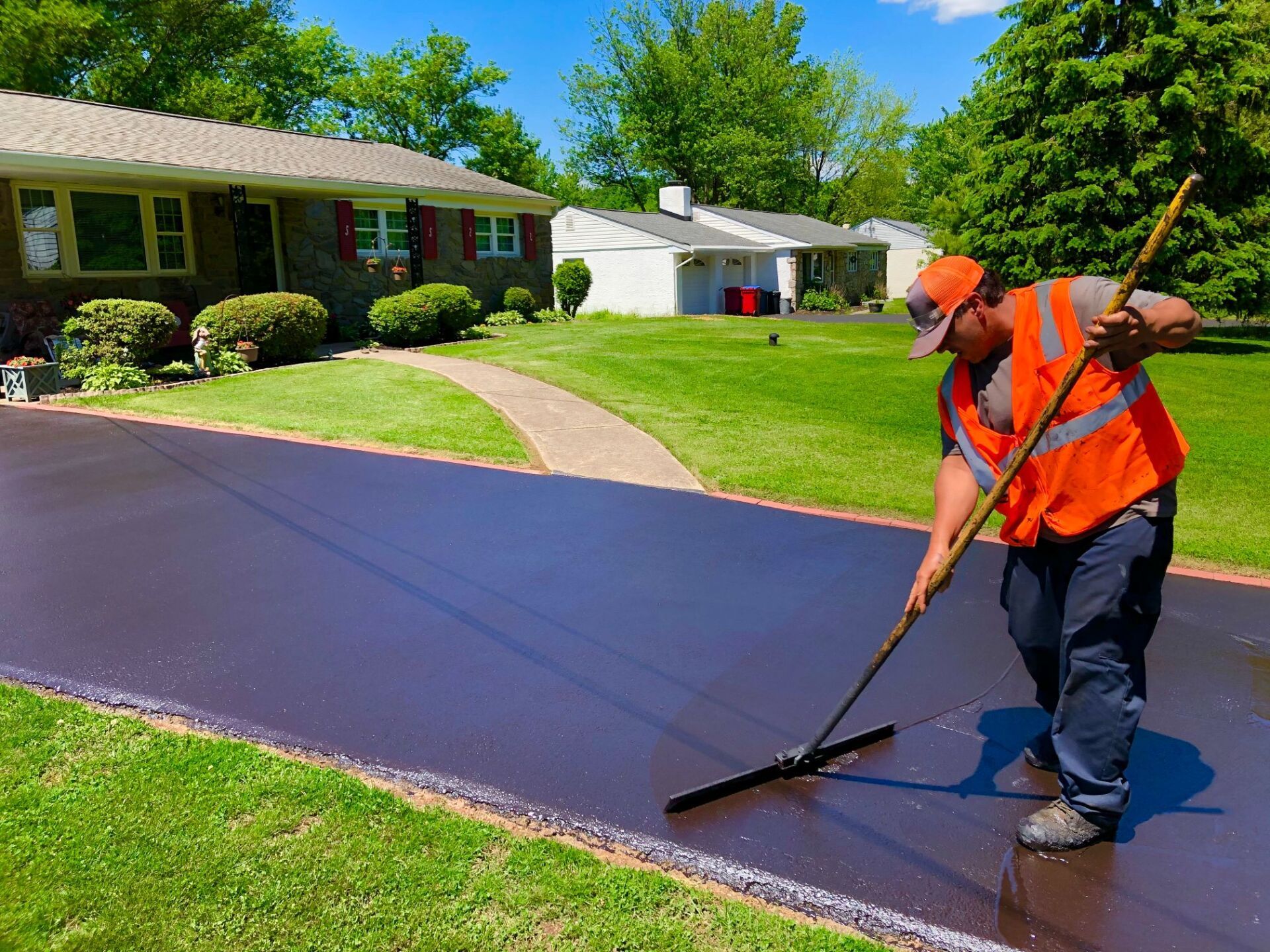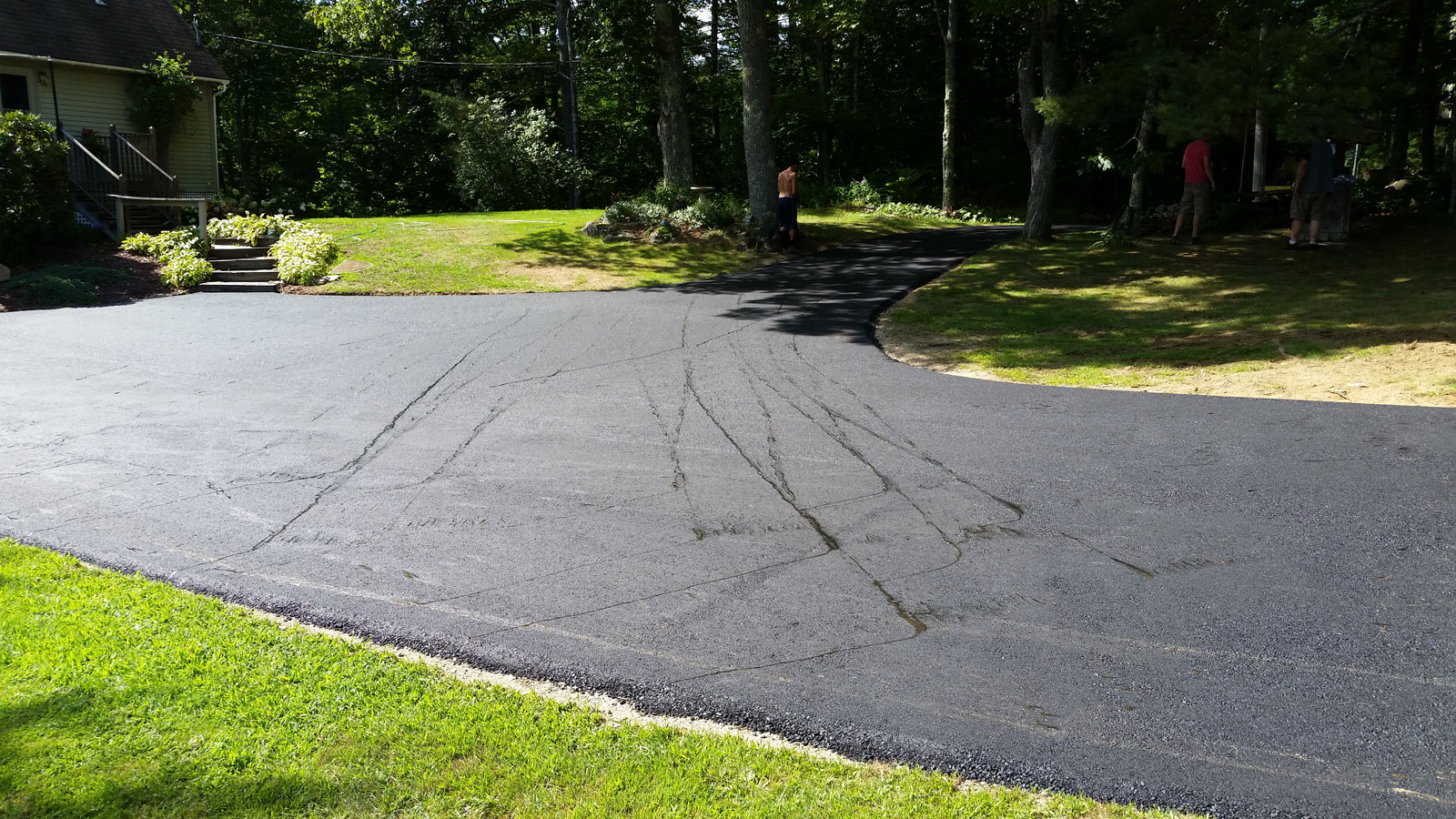Hot Mix Asphalt: A Sustainable Service for Sidewalk
Hot Mix Asphalt (HMA) has actually emerged as a leading lasting choice for pavement remedies, offering a myriad of innovative innovations and environmental advantages. As the demand for environment-friendly building methods expands, exploring the subtleties of HMA's sustainability can give beneficial insights right into the future of pavement options.
Ecological Advantages of Warm Mix Asphalt

Additionally, Hot Mix Asphalt assists to alleviate metropolitan heat island impacts. Its dark color soaks up sunlight, decreasing the amount of warm reflected back into the atmosphere contrasted to lighter-colored pavements. This can lower ambient temperature levels in city locations, lowering the demand for cooling and ultimately decreasing power usage.
Additionally, Hot Mix Asphalt adds to enhanced stormwater management. Its permeable nature enables water to reenergize and infiltrate the pavement groundwater materials, lowering runoff and the danger of flooding. These ecological advantages make Warm Mix Asphalt a sustainable selection for leading roads and highways.
Power Effectiveness in HMA Manufacturing
Is power efficiency a crucial variable in the manufacturing of Warm Mix Asphalt (HMA)? Power plays a substantial duty in the manufacturing of HMA, influencing both cost and ecological sustainability. One essential element of power effectiveness in HMA production is the use of warm mix asphalt (WMA) innovations.
Moreover, advancements in plant innovations have actually led to even more energy-efficient HMA production processes. By maximizing power use in HMA production, the industry can minimize its carbon impact while maintaining premium pavement materials.
Recyclability of Warm Mix Asphalt
The recyclability of Warm Mix Asphalt (HMA) is a crucial element of its sustainability and long-lasting ecological influence. HMA is among one of the most recycled products in the USA, with over 100 million lots of redeemed asphalt sidewalk (RAP) being recycled each year in brand-new sidewalk construction. Recycling HMA offers numerous environmental benefits, such as lowering the requirement for virgin materials, reducing energy consumption during manufacturing, and lowering the amount of waste sent to land fills.
The procedure of recycling HMA includes crushing the existing sidewalk, squashing it right into smaller sized items, and mixing it with brand-new accumulation and asphalt binder to develop a recycled mix. This recycled mix can commonly carry out in addition to or even better than conventional HMA, while requiring fewer raw products and generating reduced greenhouse gas discharges. By integrating RAP into brand-new pavement jobs, road agencies can preserve natural deposits, lower costs, and minimize the ecological footprint of road building and maintenance activities. In general, the recyclability of HMA plays a substantial role in promoting sustainable practices within the pavement sector.

Long-Term Efficiency of HMA
Asphalt pavements show durability and strength over an extended period, reflecting the long-lasting performance of Warm Mix Asphalt (HMA) The long life of HMA can be credited to its capability to hold up against hefty web traffic loads, severe weather problems, and the effects of aging. Studies have shown that properly designed and appropriately created HMA pavements can last for twenty years or more with routine upkeep. The trick to making the most of the lasting performance of HMA hot mix asphalt lies in utilizing premium materials, complying with best techniques in construction, and implementing efficient upkeep techniques. Proper drainage, routine evaluations, and timely fixings are crucial for protecting the architectural integrity of HMA pavements gradually. In addition, improvements in HMA technology, such as making use of polymer-modified binders and cozy mix asphalt, have actually better enhanced the longevity and durability of HMA sidewalks. By prioritizing high quality construction and upkeep practices, HMA remains to prove itself as a economical and sustainable option for long-lasting pavement facilities.

HMA: Sturdiness and Sustainability
Demonstrating both durability and sustainability, Warm Mix Asphalt (HMA) has become a keystone in the building and construction of long-lasting sidewalk frameworks - regrading. HMA's longevity stems from its capability to hold up against hefty tons, rough weather, and high web traffic quantities, making it a reputable choice for roadways, highways, and airport terminal runways. The make-up of HMA, which usually consists of aggregates, binder, and filler, plays an important duty in boosting its longevity and resistance to put on and tear
Additionally, HMA's sustainability hinges on its recyclability and energy-efficient manufacturing procedure. The ability to recycle reclaimed asphalt pavement (RAP) in brand-new HMA mixtures lowers the demand for virgin products and reduces the ecological influence of sidewalk building and construction and upkeep. Additionally, the power performance of generating HMA exists in its lower blending temperatures compared to other sidewalk products, bring about reduced power usage and greenhouse gas emissions.
Verdict
To conclude, hot mix asphalt (HMA) provides a sustainable remedy for sidewalk with its eco pleasant attributes. HMA's recyclability, energy effectiveness in manufacturing, and long-lasting sturdiness make it an environment-friendly option for road construction. By conserving natural deposits, reducing waste, and decreasing greenhouse gas discharges, HMA plays an important function in promoting sustainability in facilities development. Its capability to mitigate city warm island results additionally underscores its value in creating durable and environmentally aware pavement systems.
HMA is one of the most recycled materials in the United States, with over 100 million bunches of reclaimed asphalt sidewalk (RAP) being reused each year in new pavement building.The procedure of recycling HMA entails grating the existing sidewalk, crushing it into smaller sized items, and mixing it with new accumulation and asphalt binder to create a recycled mix.Asphalt pavements show durability and durability over an extensive period, mirroring the long-term efficiency of Warm Mix Asphalt (HMA) Additionally, developments in HMA modern technology, such as the use of polymer-modified binders and cozy mix asphalt, have actually even more improved the longevity and durability of HMA sidewalks. The ability to reuse redeemed asphalt pavement (RAP) in new HMA blends lowers the demand for virgin products and minimizes the environmental influence of pavement building and construction and maintenance.